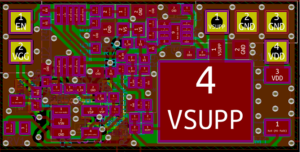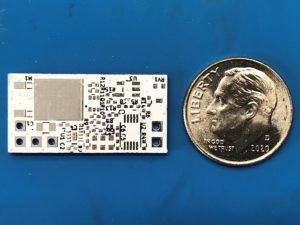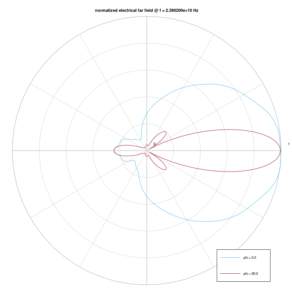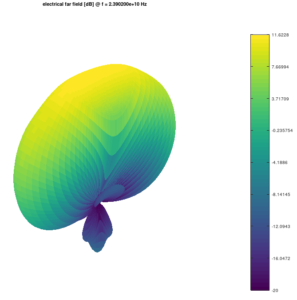At Echoic Engineering, we have expertise in the research and development of RF components over a wide-range of applications including scientific research, RF devices and communication systems.
PCB Design
Echoic Engineering works extensively on PCB design and layout with a focus on RF (radio frequency) boards. In our PCB development program, we specialize in engineering and prototyping high density PCB designs for production. Furthermore, we have extensive experience in converting, modifying or updating any existing PCB design and BOM configuration.
Power Amplifiers
Power amplifiers is a critical component in RF communications and RF power generation. Depending on the application frequency and required power output. In the past, Dr. Yuk has developed power amplifiers in many technologies, most notably using GaN HEMT devices. His experience ranges from L-band PAs producing 200W+ to K-band PAs producing several Watts. He has also developed multi-mode multi-band, low-cost, high volume RFIC PAs for the cellular industry.

Power amplifiers are ubiquitous in RF design and are under perpetual development due to the many application-specific requirements across frequency, gain, power, linearity and efficiency. As a result, a diversity of topologies ranging from hybrid discrete power amplifiers to MMIC power amplifiers will continue to be in high demand.

A variety of technologies exist to address the requirements of the PA which further increase the complexity of PA design. Some of the design challenges include active device modeling and simulation, passive network design and modeling as well as fabrication, testing and tuning for spec compliance.
Low-Noise Amplifiers
Low noise amplifiers (LNA) serve a critical role in any RF / microwave receiver system. Their job is to take ultra-low power signals picked up from a receiving antenna and amplify them for use in a wireless-receiver. The main challenge with LNAs involve designing for minimum noise figure (a figure of merit quantifying the noise added by the LNA itself), while maximizing gain and minimizing input return loss
This X-Band 2-stage low-noise amplifier (LNA) MMIC was designed by Echoic Engineering using Keysight Advanced Design System (ADS). Each circuit network, transistor model, and passive component is meticulously designed, synthesized and verified using advanced electromagnetic (EM) simulation. Furthermore, every trace interconnect can introduce parasitic elements which need to be arduously compensated into the network response. The result is a high performance 10GHz LNA with over 24dB gain and ~2dB noise figure, nearly the minimum for this technology.


Mixers
Mixers and up/downconverters are critical components in any transceiver system. One of the more exciting prospects in RF/microwaves is developing mixers and frequency converters using GaN technology. GaN has the ability to provide high lineary and high dynamic range with OIP3 >40dBm. High integration using GaN MMICs will allow smaller and more efficient devices for compact receivers.

In this K-band GaN MMIC, Echoic Engineering performed all of the circuit simulation, layout and EM verification. We can provide the design assistance modeling Mixers and up/downconverters are one of the exciting areas of primed for evolution in the world of GaN.
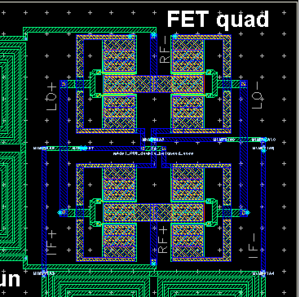
Antennas
Antenna design is critical for optimal performance in RF, microwave, and mobile wireless systems. It enables efficient signal transmission and reception, ensuring clear communication and minimal interference. Well-designed antennas accommodate various frequencies, support directional patterns, and integrate into compact device spaces. They adhere to regulations, consider environmental factors, and contribute to energy efficiency. As technology evolves, antenna design drives innovation, enabling new applications in 5G, IoT, and beyond, while maintaining reliable wireless connections.
Patch antenna arrays can be designed for specific performance pertaining to gain, beamwidth and frequency. Design parameters include substrate choice, patch dimensions, feed point, and ground plane. In patch antenna arrays, parameters like element spacing, array geometry, and phase control are meticulously addressed.

Passive Filters, Couplers, Dividers
Passive RF and microwave component design plays a pivotal role in modern communication and electronic systems, enabling the seamless transmission and reception of high-frequency signals. These components, such as power dividers, filters, and couplers, are the unsung heroes that underpin the efficiency, reliability, and performance of wireless technologies.
Power dividers, for instance, are essential for splitting or combining RF signals, distributing power accurately among various circuit branches. They ensure that signals maintain their integrity and strength, enabling smooth communication between different parts of a system. Filters, on the other hand, act as gatekeepers for signals, allowing only specific frequencies to pass through while attenuating unwanted noise and interference. This selective behavior enhances signal quality and minimizes disruptions, making filters indispensable for maintaining a clear and reliable communication channel.

Couplers are instrumental in tapping or coupling off a portion of an RF signal for measurement, monitoring, or redistribution. They provide a controlled means of diverting signal strength without significant loss, facilitating accurate diagnostics and signal analysis. These components enable engineers to gain insights into system behavior and troubleshoot issues effectively.
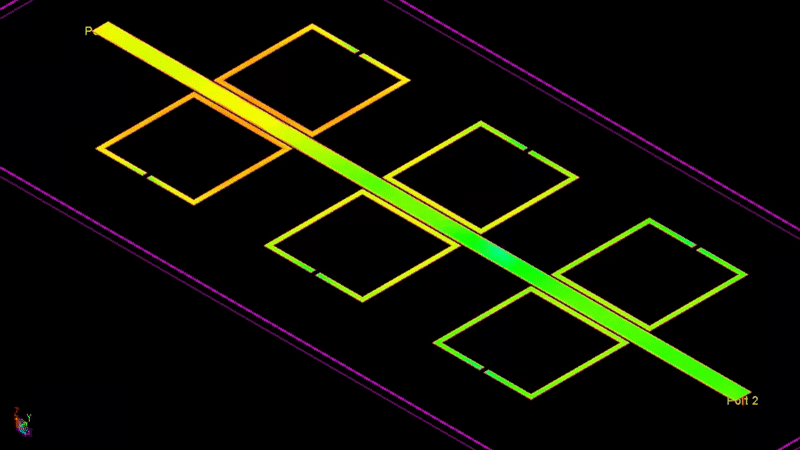
In the world of wireless technology, where efficient spectrum utilization is paramount, passive RF and microwave components contribute to optimizing signal paths, reducing signal loss, and maximizing the overall system performance. Their precise design and careful integration ensure minimal distortion and efficient energy usage, resulting in enhanced data rates, extended coverage, and improved signal-to-noise ratios. As the demand for faster and more reliable wireless communication continues to grow, the importance of well-designed passive RF and microwave components remains paramount, driving advancements in telecommunications, IoT, radar systems, and beyond.
Discrete Components and Modeling
Device characterization and modeling is one of our specialties. We have thousands of hours of hands-on experience characterizing, extracting and developing linear and non-linear models for active and passive devices.


One of the pitfalls of RF and microwave design is the lack of sufficient models used for computer-based simulation. As device behavior becomes more complex as new technologies emerge, it is crucial to fine-tune the circuit models used to represent these devices. We can provide the expertise to continually refine your circuit models for improved accuracy and predictive capability
Frequency multipliers and exotic circuits
Dr. Yuk has continued to push the envelope in RF design for the last 15 years. Unconventional applications like frequency multipliers using emerging technologies for SiC and GaN have been demonstrated.



If you have a topic of research that you would like to pursue, please contact us.

